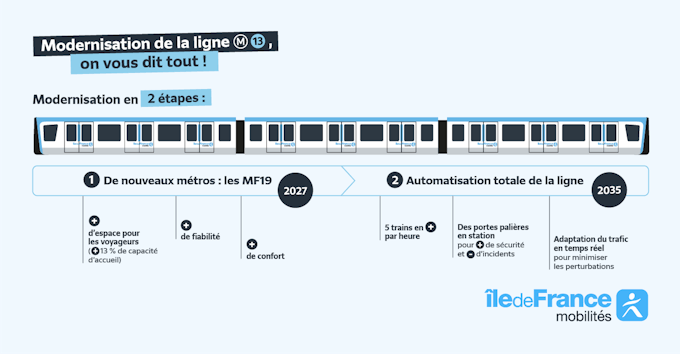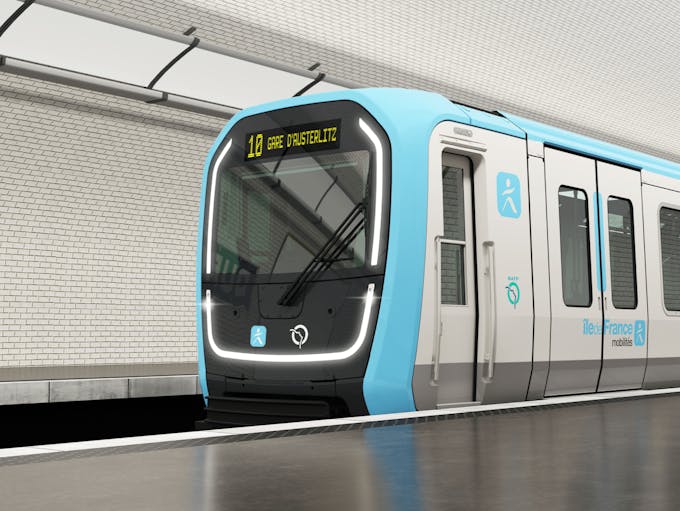Metro: the automation of line 13 voted

Line 13 has a long history. First of all, that of a line known for its record number of passengers and its more than "tight" journeys during rush hour. A problematic passenger density that the extension of line 14, inaugurated in December 2020, aims to remedy. Since the works, the number of passengers at peak hours has dropped by 19 to 27%.
Convinced of the importance of improving the comfort of this line, which is one of the busiest on the network, and anticipating the increase in ridership that should accompany development and job creation projects on the outskirts of Paris, Île-de-France Mobilités has chosen to invest in its modernisation. A modernization that involves the automation of line 13.
Automation, how does it work?
Automating a line is a colossal project that requires a lot of time (up to ten years) and organisation, to continue the service while carrying out the work. Indeed, it is not enough to "automate" but to review the logic and logistics of transport globally along the entire line.
A long-term project that offers many advantages such as an increase in the number of trains per hour, but also a reduced waiting time between two trains.
Tobetter understand how the automation of a metro line is prepared,how it works and what is at stake, read our explanatory article.
And for travelers, what does it change?
In addition to access to more modern stations and comfortable trains, the automation of line 13 presents an overall improvement in transport, in several respects:
- Better regularity of the interval between each train
- The increase in the frequency of crossings with an average of 40 trains per hour
- The possibility of adding a train on an ad hoc basis to adapt traffic followingan incident or an increase in ridership
- Glass facades that make waiting on the platforms safer
- Better real-time traffic information on board trains and on platforms
- More spacious and comfortable spaces
The stages of the modernisation of line 13
From 2027: the arrival of the MF19, new-generation metros
The first stage of the modernisation plan concerns the implementation of new metro models: the MF19. Modern and with the highest capacity (+5%), they will greatly improve comfort and reliability on the line.
Major work to adapt the stations and railway infrastructure will be carried out in order to accommodate the MF19s. Signage will have to be adapted, infrastructure modified and passenger information systems in stations will have to be upgraded. The first MF19 metros are scheduled to run in mid-2027.

By 2035: full automation
The next step? Before reaching the culmination of full automation, further work will be undertaken; including the construction of platform screen doors on all the platforms of the line to make waiting in the station safer, but also the adaptation of the checkpoints.
The future automatic metros of line 13 will be equipped with train automation and operation systems, software that makes it possible, remotely, to ensure the safety, supervision and control of trains without staff on board.
A great prospect for all Ile-de-France residents who use line 13 every day and will gain, a little more, in comfort on the network!